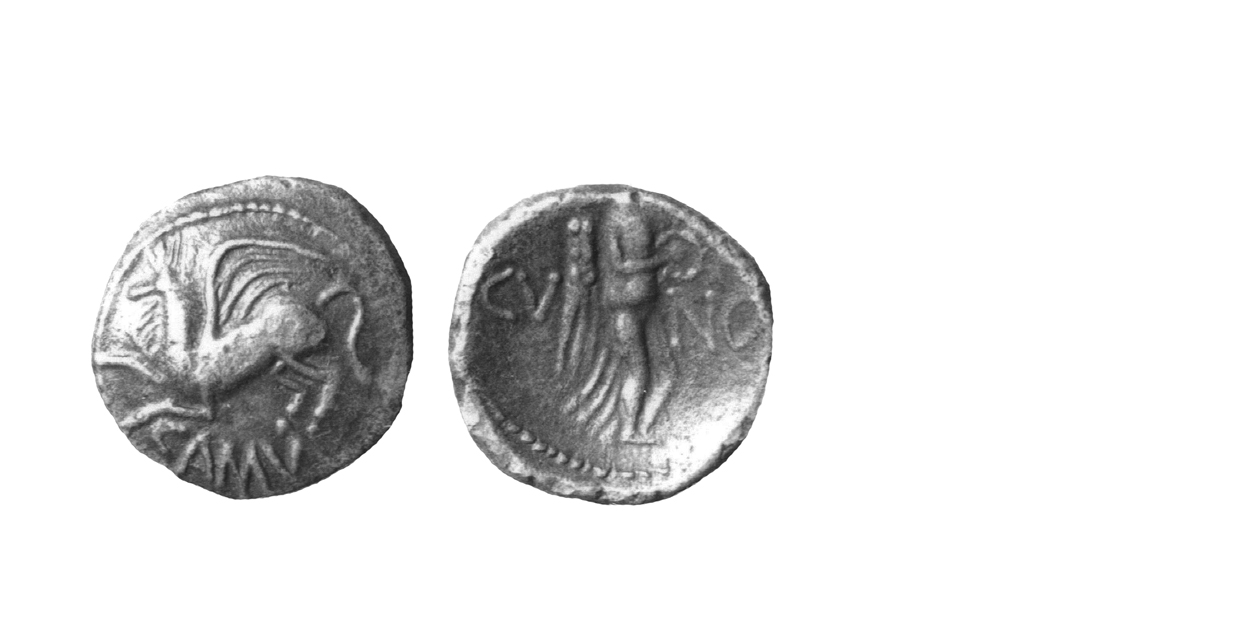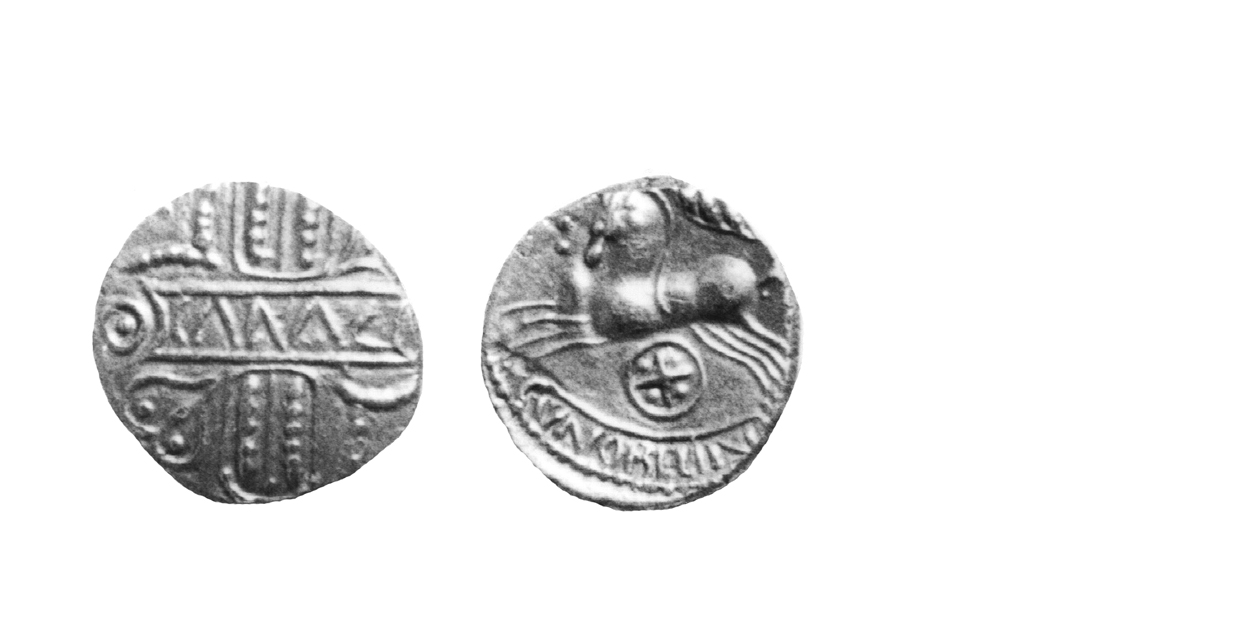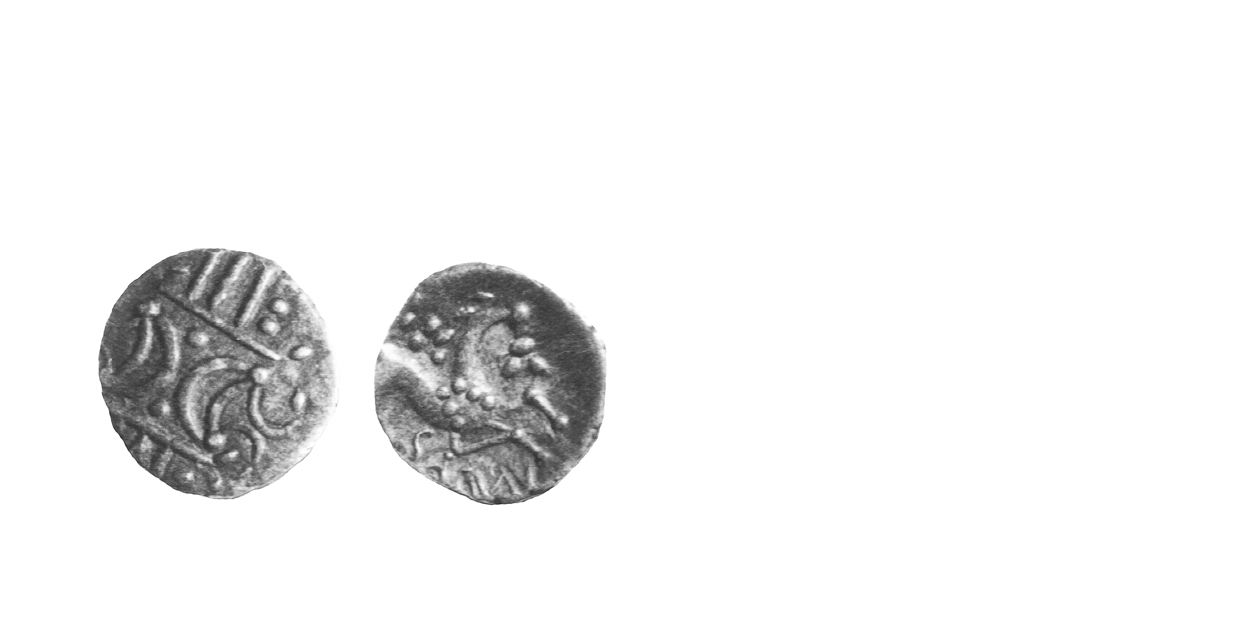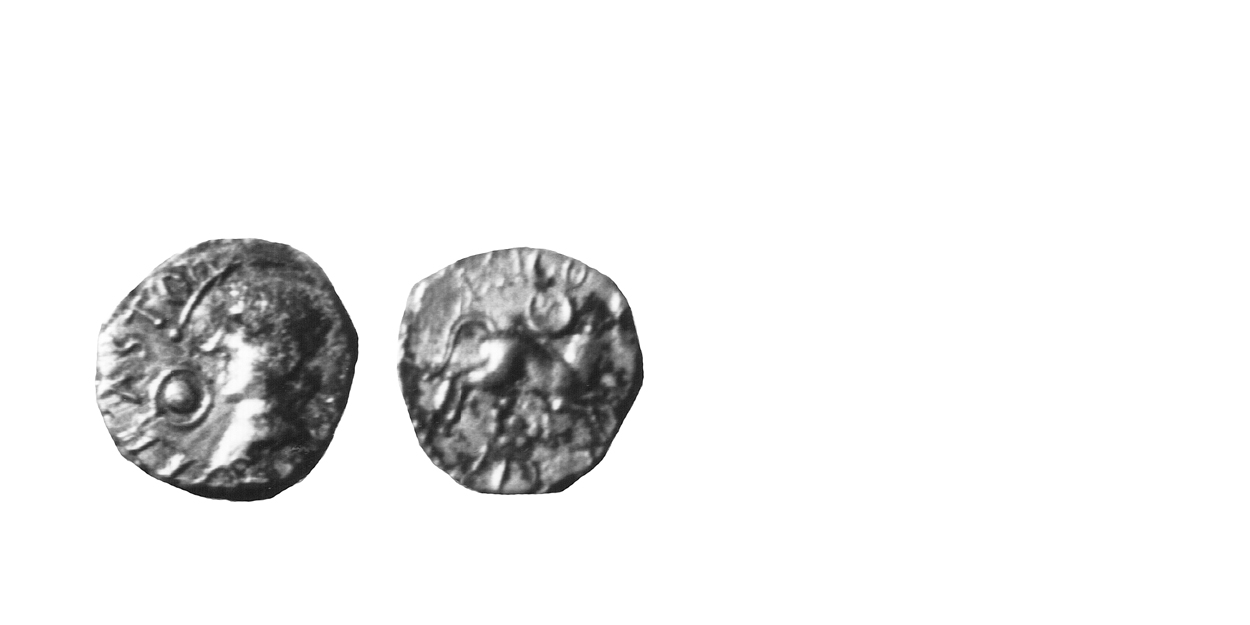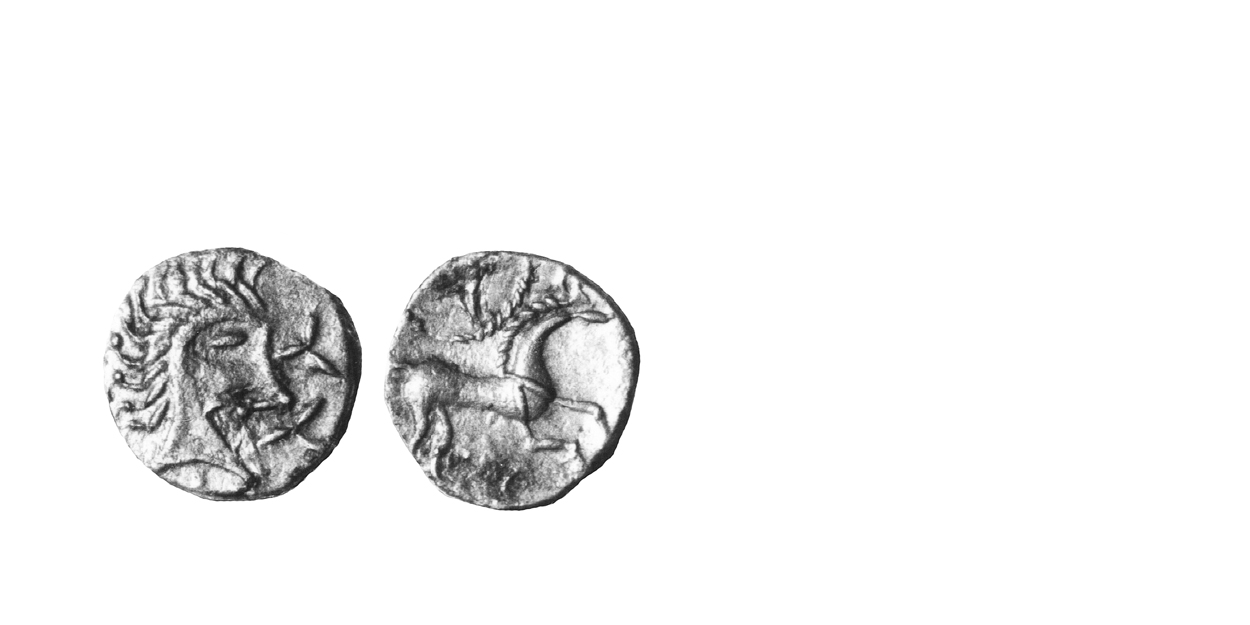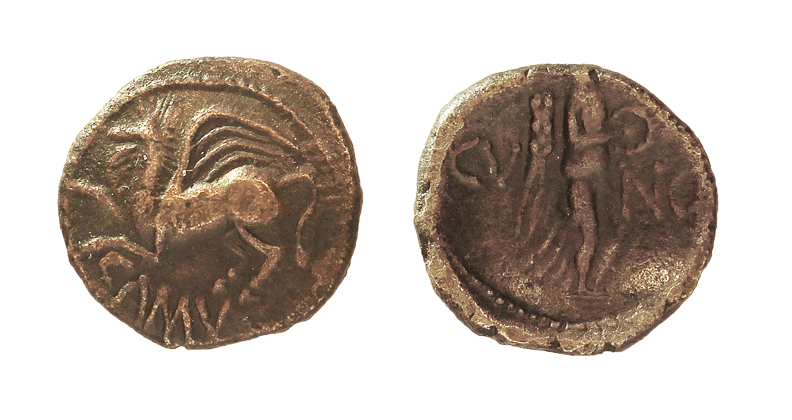
History
Later Coinages (Info)
Coinage in the North Thames Region 10-61 A.D.
Trinovantes/Catuvellauni
The coinage of Cunobeline dominated the territory of the Trinovantes/Catuvellauni from 10 to 43 A.D. During the "Interregnum", the standard weight of the stater was reduced to 5.40 grammes, down from the 5.60 grammes of Tasciovanus' reign. Apparently, Cunobeline tried to restore the weight to the heavier standard of 5.60 upon his accession to the throne, but was not successful. By 20 A.D., the weight of his staters was reduced to 5.40 grammes. The other tribes had maintained the lower standard throughout the period and this possibly thwarted Cunobeline's attempt at restoration.
Cunobeline's coins were as varied in type as those of Tasciovanus, and carried many designs inspired by Roman images. He styled himself the son of Tasciovanus on some of these, perhaps to legitimatize his claim to the throne. Whether he and Epaticcus were actually brothers is not confirmed in the historical record. The Trinovantian/Catuvellaunian coinage came to an end with the Roman invasion in 43 A.D. (75).
Iceni
The Iceni struck silver coins throughout the first half of the First Century A.D. and continued production until the Boudiccan Revolt of 61 A.D. The designs on the Icenian coinage showed a double-crescent emblem on the obverse and a horse with inscription on the reverse. This basic type continued with minor changes to the horse and a series of inscriptions: ANTED, ECEN, SAENV and AESV.
After the Claudian invasion, the Iceni became independent allies of Rome, eventually under the leadership of Prasutagus. Originally it was believed he struck the silver coins with a Romanized bust and the inscription SVB ESVPRASTO on the obverse and a horse with the legend ESICO FECIT on the reverse (76). This is less certain today, though still a possibility.
Queen Boudicca assumed leadership of the tribe after Prasutagus' death, issuing an uninscribed silver unit with a Celticized head on the obverse. These were struck in great quantities to finance the revolt against Rome (77).
Next Section – Later Coinages – South Thames Region

